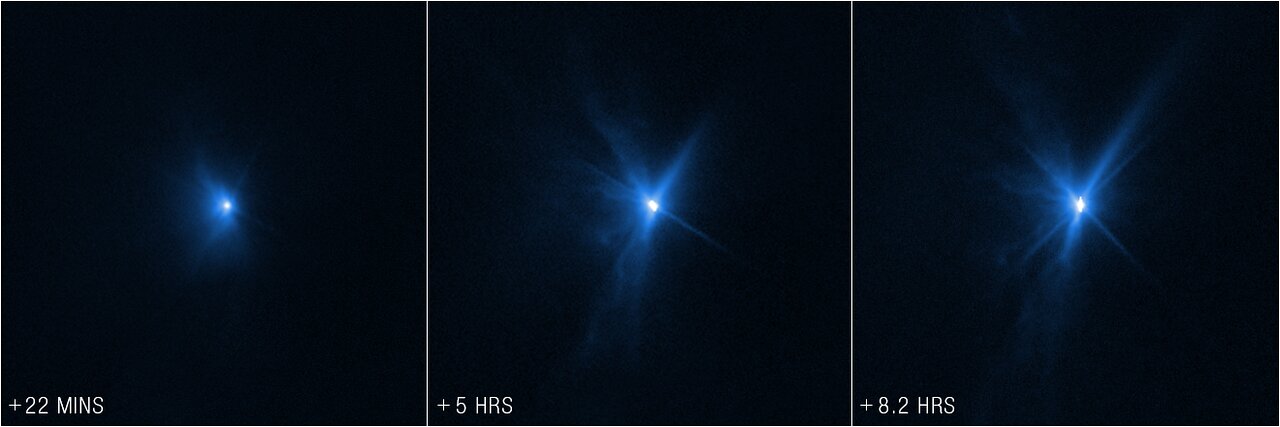About the Object
Colours & filters
| Band | Wavelength | Telescope |
|---|---|---|
|
Optical
Long Pass | 350 nm | James Webb Space Telescope WFC3 |
Hubble Captures DART Impact
These images from the NASA/ESA Hubble Space Telescope, taken 22 minutes, 5 hours, and 8.2 hours after NASA’s Double Asteroid Redirection Test (DART) intentionally impacted Dimorphos, show expanding plumes of ejecta from the asteroid’s body. This event was the world’s first test of the kinetic impact technique using a spacecraft to deflect an asteroid by modifying its orbit.
The Hubble images show ejecta from the impact that appear as rays stretching out from the body of the asteroid. The bolder, fanned-out spike of ejecta to the left of the asteroid is in the general direction from which DART approached. In the Hubble images, astronomers estimate that the brightness of the Didymos system increased by 3 times after impact. They’re also particularly intrigued by how that brightness then held steady, even eight hours after impact.
These observations, when combined with data from the NASA/ESA/CSA James Webb Space Telescope, will allow scientists to gain knowledge about the nature of the surface of Dimorphos, how much material was ejected by the collision, how fast it was ejected, and the distribution of particle sizes in the expanding dust cloud.
Hubble will observe Dimorphos ten more times over the next three weeks to monitor how the ejecta cloud expands and fades over time.
Hubble observations were conducted in one filter, WFC3/UVIS F350LP, and assigned the colour blue.
Credit:NASA, ESA, and STScI
About the Image
| Id: | weic2215b | |
|---|---|---|
| Type: | Collage | |
| Release date: | 29 September 2022, 15:30 | |
| Related releases: | weic2215 | |
| Size: | 1320 x 440 px | |


